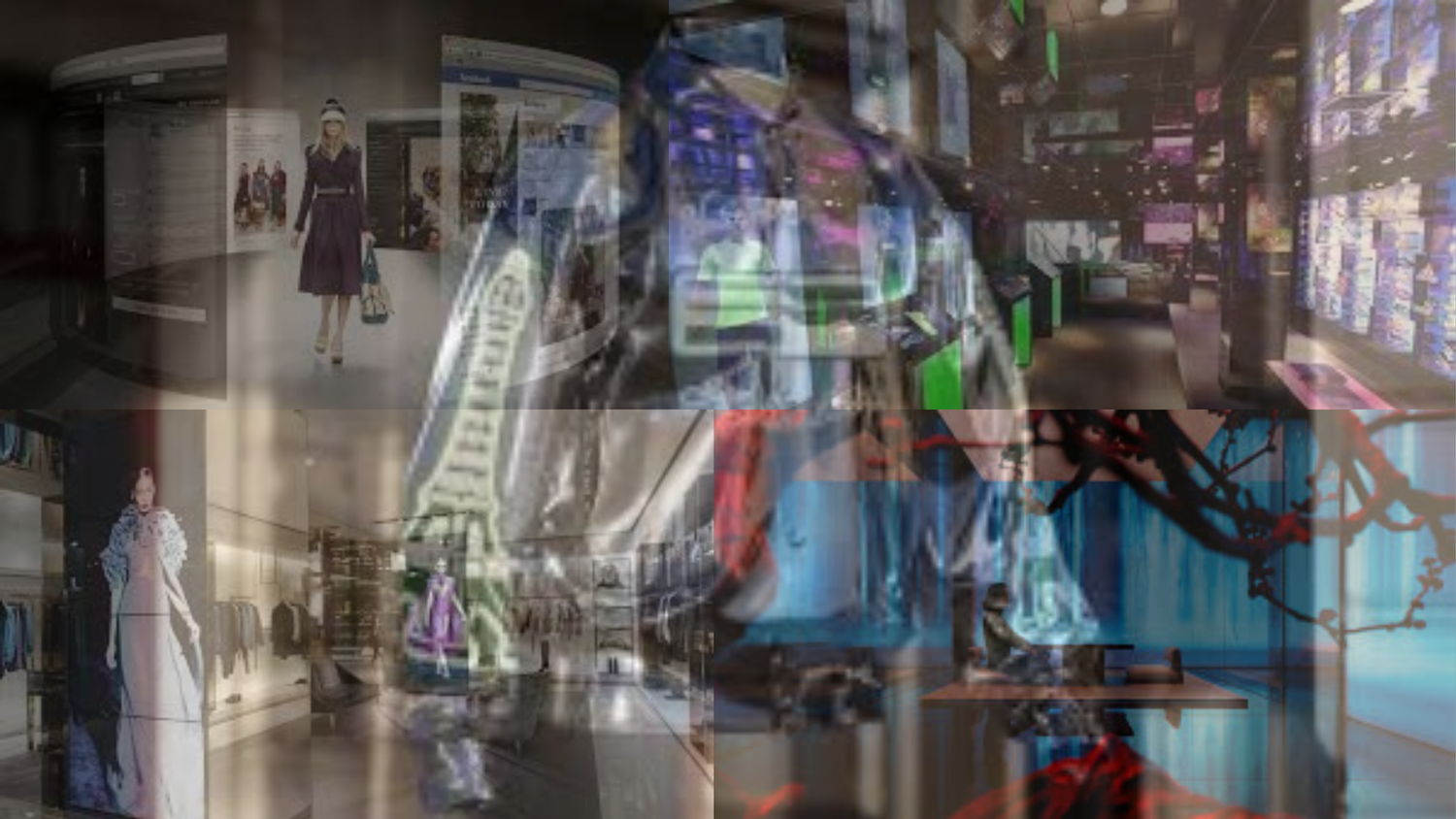
Luxury retail has undergone a significant transformation driven by digital technology and changing consumer expectations. The term ‘phygitalisation’ is used to describe the fusion of physical and digital realms to create a seamless and enhanced customer experience. The focus of this article is on the dynamics of digital transformation, with an emphasis on the physical atmosphere, digital realm, and human factor in luxury retail.
Physical Atmosphere in the Phygital Age
Luxury retail’s appeal has always been deeply connected to its physical environment. This encompasses the architectural grandeur, sensory experiences, and exclusivity that physical stores offer. To keep up with digital advancements, these physical attributes must evolve in the digital era. The physical experience becomes more immersive and personalised by incorporating digital technologies like virtual showrooms and digital try-ons. The challenge is to keep the brand’s heritage and exclusivity while also incorporating modern technologies. This is crucial in ensuring that the transition to a phygital environment does not dilute the brand’s identity but rather amplifies it.
Digital Sphere: Beyond the Traditional Boundaries
Digitalisation in luxury retail encompasses more than just e-commerce. This is about creating a digital environment that complements and enhances the physical experience. The use of AI and CRM tools to personalise customer relationships, remote consultations, and the integration of digital labels for improved customer information are all part of this. Brands like Chloé, through initiatives like the “Chloé Academy”, showcase the importance of training salespeople to adapt to digital tools, ensuring that the human element remains central even in a digital context. Luxury brands have been forced to innovate quickly to meet changing consumer preferences due to the COVID-19 pandemic, which has accelerated the adoption of these technologies.
The Human Variable in a Phygital World
The human factor is still crucial in luxury retail, despite the increase in digital technology. The luxury experience hinges on the expertise, personalised service, and emotional connection provided by sales associates. However, in a phygital context, the role of the human variable evolves. Sales associates must be proficient in both traditional customer service skills and the use of digital tools to enhance the customer experience. For their staff to effectively navigate this new landscape, brands must invest in training and development.
Conclusion
The phygitalisation of luxury retail presents a complex yet exciting challenge. It requires a delicate balance between preserving the traditional allure of luxury retail and embracing the opportunities presented by digital technology. This transformation is not just about technological integration; it’s about reimagining the luxury experience in a holistic manner that resonates with contemporary consumer expectations while staying true to the brand’s heritage.

Recommendations for Luxury Brands
A strategic and thoughtful approach is needed to integrate digital and physical realms – known as phygitalisation – in the rapidly evolving landscape of luxury retail. Luxury brands must manage this amalgamation of technology and traditional retail to create an experience that satisfies their discerning clientele. To effectively manage this transition, several key strategies should be considered:
Integrate, Don’t Replace: The key is to use technology as an enhancer, not a replacement. Augmented Reality (AR), Virtual Reality (VR), and Artificial Intelligence (AI) offer exciting opportunities to augment the physical retail experience. These technologies can provide customers with immersive experiences that complement the tactile and visual pleasures of a luxury store. For instance, AR can be used to visualise products in different environments or VR for virtual try-ons, enriching the sensory experience of the physical store.
Personalise the Customer Journey: Utilising data analytics and AI, luxury brands can offer highly personalised experiences to their customers, both online and in physical stores. This personalisation, however, must be balanced with a strong commitment to privacy and data protection, ensuring customers feel their personal information is respected and securely handled.
Invest in Staff Training: The human element remains crucial in luxury retail. Staff should be well-equipped with the skills to leverage digital tools, ensuring they can provide an integrated phygital experience. This involves training employees not just in the technical aspects of these tools but also in how to blend digital interactions with the high level of personal service expected in luxury retail.
Sustainability as a Core Value: Digital strategies must align with sustainable practices, a growing concern among luxury consumers. This includes optimising supply chain management to reduce carbon footprints and promoting sustainable consumer behaviours. Digital tools can aid in this by improving efficiency and reducing waste, thereby supporting the brand’s sustainability goals.
Omnichannel Cohesion: Consistency is key across all channels – the story, aesthetics, and customer service should seamlessly blend whether the customer is shopping online or in-store. This cohesion reinforces brand identity and ensures a uniform experience regardless of how the customer chooses to engage with the brand.
Embrace Experimentation: The phygital landscape is constantly evolving, and luxury brands should be open to experimenting with new technologies and strategies. This could involve exploring emerging platforms or novel digital marketing techniques, always with an eye on how these innovations can enhance the customer experience.
Listen to the Customer: Regularly collecting and analysing customer feedback is essential to understand changing preferences in a phygital world. This feedback can guide adjustments in strategy and help brands stay aligned with their customers’ evolving needs and expectations.
Maintain Exclusivity and Heritage: While adapting to digital trends, luxury brands must ensure their rich heritage and sense of exclusivity are preserved. The challenge is to use digital channels in a way that enhances these aspects rather than diluting them. The story of the brand and the uniqueness of the products should be at the forefront of all phygital experiences.
Luxury brands require a delicate balance between embracing technology and maintaining the core values that define luxury retail when managing physical stores in a digital context. Luxury brands could successfully navigate the physical landscape using these key strategies, providing customers with an unmatched, holistic experience that resonates both online and offline. In short, the journey to phygitalization in luxury retail is a complex and multifaceted one. A strategic approach that combines digital innovation with traditional virtues of luxury retail results in an enriched customer experience that balances the best of both worlds.





